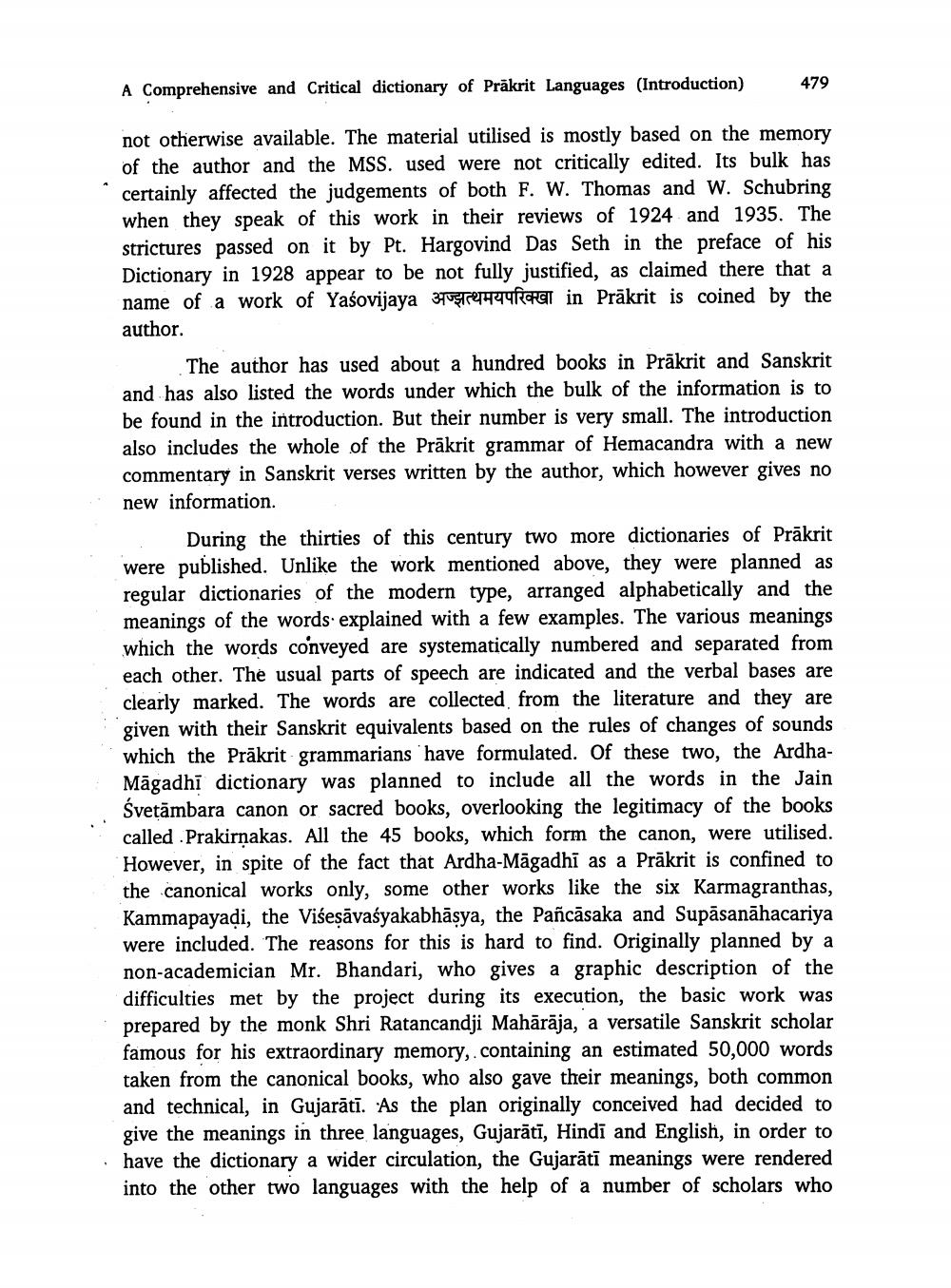________________
A Comprehensive and Critical dictionary of Prakrit Languages (Introduction)
479
not otherwise available. The material utilised is mostly based on the memory of the author and the MSS. used were not critically edited. Its bulk has certainly affected the judgements of both F. W. Thomas and W. Schubring when they speak of this work in their reviews of 1924 and 1935. The strictures passed on it by Pt. Hargovind Das Seth in the preface of his Dictionary in 1928 appear to be not fully justified, as claimed there that a name of a work of Yaśovijaya 345rehenfchel in Prākrit is coined by the author.
The author has used about a hundred books in Prākrit and Sanskrit and has also listed the words under which the bulk of the information is to be found in the introduction. But their number is very small. The introduction also includes the whole of the Prākrit grammar of Hemacandra with a new commentary in Sanskrit verses written by the author, which however gives no new information.
During the thirties of this century two more dictionaries of Prākrit were published. Unlike the work mentioned above, they were planned as regular dictionaries of the modern type, arranged alphabetically and the meanings of the words explained with a few examples. The various meanings which the words conveyed are systematically numbered and separated from each other. The usual parts of speech are indicated and the verbal bases are clearly marked. The words are collected from the literature and they are given with their Sanskrit equivalents based on the rules of changes of sounds which the Prākrit grammarians have formulated. Of these two, the ArdhaMāgadhi dictionary was planned to include all the words in the Jain Svetāmbara canon or sacred books, overlooking the legitimacy of the books called . Prakirnakas. All the 45 books, which form the canon, were utilised. However, in spite of the fact that Ardha-Māgadhi as a Prākrit is confined to the canonical works only, some other works like the six Karmagranthas, Kammapayadi, the Višesāvaśyakabhāsya, the Pañcāsaka and Supāsanāhacariya were included. The reasons for this is hard to find. Originally planned by a non-academician Mr. Bhandari, who gives a graphic description of the difficulties met by the project during its execution, the basic work was prepared by the monk Shri Ratancandji Mahārāja, a versatile Sanskrit scholar famous for his extraordinary memory, containing an estimated 50,000 words taken from the canonical books, who also gave their meanings, both common and technical, in Gujarātī. As the plan originally conceived had decided to
give the meanings in three languages, Gujarātī, Hindi and English, in order to · have the dictionary a wider circulation, the Gujarāti meanings were rendered
into the other two languages with the help of a number of scholars who




